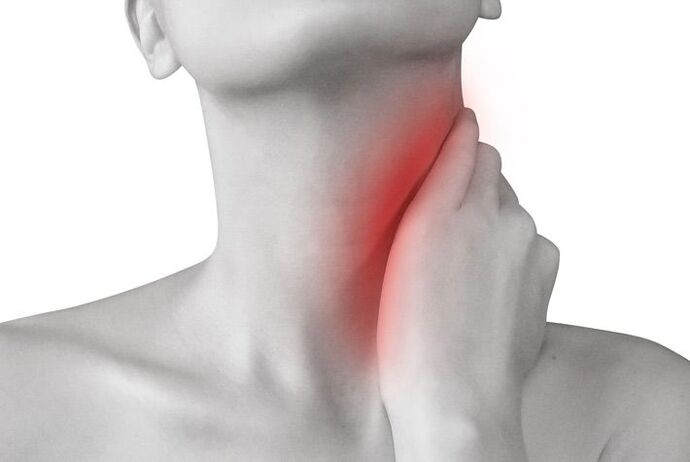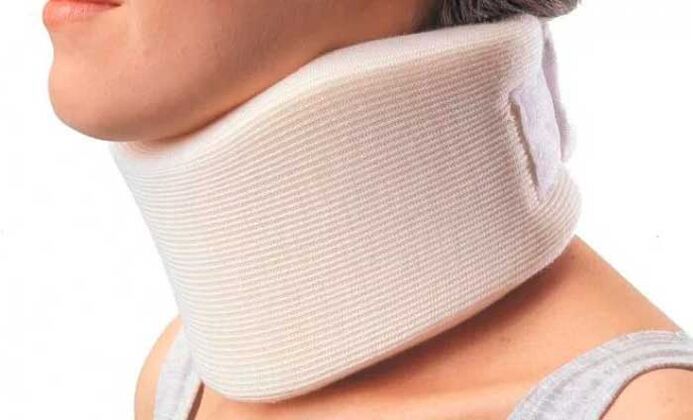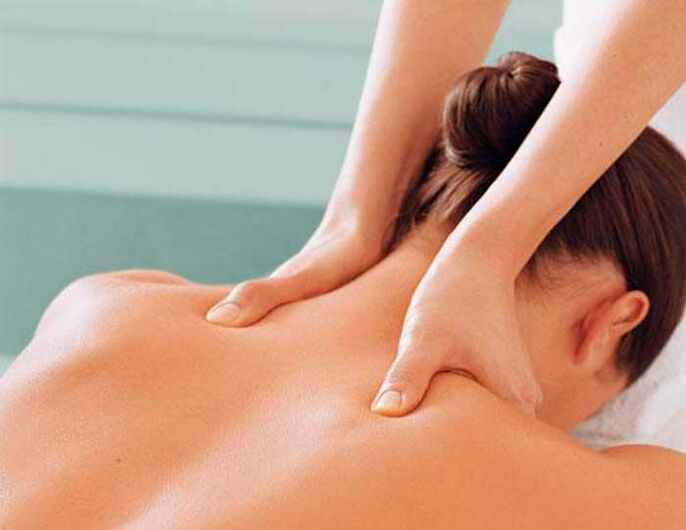
The neck is considered a vital part of the human body. The main arteries, veins, capillaries and nerve fibers pass through it and force the whole body to work fully. Blood channels provide the brain with nutrients and oxygen, without which the most important organ in the nervous system cannot function normally. If someone has a neck pain, they should look for the causes of the disorder and eliminate them if possible.
Types of neck pain
Pain syndrome can be divided into two main groups:
- Cervicalgia (lumbago) - spreads regularly and with varying intensity and dynamics to the shoulders and beyond. It often has a tense, sore nature. This is due to painful cramps in the neck muscles.
- The cervicago is a sharp pain that occurs unexpectedly when the head turns sharply in a prolonged discomfort. However, one is not free to turn one’s neck, nodding due to severe pain. "Shots" on the shoulders, chest, hands. This pain is associated with stimuli to nerve endings running near the brain.
Causes of the disorder
Patients often cause neck pain. Sometimes they give back cramps due to accidental head movements. Occasionally, discomfort occurs in the occipital region. It is especially unpleasant if the pain syndrome occurs in the morning due to an uncomfortable posture during sleep.
In the event of a confluence of adverse conditions, pain may occur due to the consequences of untreated infectious diseases. They are so intolerable that it is inconceivable why they occur.
Neck pain occurs for a variety of reasons:
- Not specific.
- Vertebrogen.
- In case of internal organ dysfunction.
- With the development of benign and malignant oncological formations.
- In case of injury.
- In case of inflammation of bone tissue (subacute osteomyelitis, purulent lymphadenitis, paralysis of the spinal cord, meningitis, exacerbation of thyroiditis).
Not specific reasons

Patients often experience non-specific pain. They occur in response to an overload of the neck muscles and are considered a natural reaction of the body. Usually, this feeling occurs when a person is in an awkward position for a long time or is physically overwhelmed.
Neck pain due to the severe loads of a dynamic nature. In order to get rid of unpleasant feelings, the body needs to rest well. This pain is not very intense, does not last long, and goes away on its own without special treatment.
If the overload is persistent, the physiological pain takes a chronic form - a degenerative-dystrophic process begins. When the alarm symptoms appear, the harmful factors must be eliminated immediately and the disease must not wait.
Statistical causes of pain may include:
- Bad position during sleep.
- Frequent head movements.
- High solid pillow.
Causes of vertebrae

Dysfunction of the cervical vertebrae, the discs, the joints that connect them, the ligaments, and the muscles is the answer to the question of why the neck hurts. When pain syndrome is continuously monitored, degenerative-dystrophic diseases of the spine are recorded on such patients during X-ray examination. Due to the anatomical structure of the neck, it is susceptible to this disease:
- The neck joints are extremely mobile.
- The vertebrae are very fragile in structure and small in size.
- They carry a huge load every second, supporting the skull.
- Neurovascular fibers are located inside the vertebrae.
Degenerative-dystrophic pathologies include:
- Osteochondrosis.
- Kyphosis.
- Spondylolisthesis (listez).
- Lordosis.
- Spondylopathy.
- Scoliosis.
- Intervertebral hernia. He has a sore neck, especially on one side.
Complications such as torticollis, protrusion of the disc, compression of the tissues of the spinal cord, progression of sciatica, deformity of the spinal cord, persistent headache, dizziness, and tinnitus may occur.
Internal problems

Anterior neck pain is associated with thyroid dysfunction. They usually present as inflammatory lesions of the gland (thyroiditis) and are acute, subacute, chronic, or autoimmune in nature. The disorder is indicated by:
- Body temperature rises.
- Lethargy, drowsiness.
- Redness of the skin, possibly swelling of the front of the neck.
- Choking, difficulty swallowing.
Inflammation of the thyroid gland causes systemic throbbing pain. It increases when swallowing, turning the head, touching the gland.
Lateral unexpected neck pain indicates inflammation of the lymph nodes in diseases of the ENT organs. The provocateurs of this condition may be:
- Different types of ENT diseases (pharyngitis, laryngitis, sinusitis, otitis media).
- Tooth decay.
- Gum diseases.
- Retropharyngeal abscess.
- Infectious diseases.
The neck may swell noticeably and lose shape. The temperature rises rapidly, and the symptoms of the underlying disease are noticed.
Formation of oncological neoplasms

Neck pain triggers cancer of the vertebral tissues, blood vessels, and internal organs in the neck. Tumors of the spine can be:
- Primary (mesenchymal chondrosarcoma, osbolithosarcoma, lymphangioma).
- Secondary (myeloma, lymphogranulomotosis).
Occasionally, the causes of neck pain lie in tumors of the spinal cord and nerve fibers.
Neck injury

The cervical spine is quite fragile and fragile, which means it is prone to injuries of varying severity, such as:
- Fractures, bumps, bruises.
- Dislocations, subluxations.
- Sprains, ligament and muscle tears.
- Tearing of a fragment of the intervertebral disc.
- Extensive hematomas, bruises.
- Compression of spinal cord tissues.
Neck injuries are extremely dangerous. This area contains important centers that allow the spinal cord to function. Involvement of the brain at the level of segments 1 and 2 of the cervical vertebrae leads to immediate death. Due to injuries to the lower segments, the person cannot feel his body under the neck and cannot move. Injury to the 7th and 8th vertebrae affects the lower extremities.
Bone inflammation
The cervical spine may suffer from inflammation. Often in the nature of systemic connective tissue diseases are:
- Limban-Sachs disease.
- Rheumatoid arthritis.
- Periarteritis nodosa.
- Wagner's disease.
- MCTD (Sharpe Syndrome).
- Progressive systemic sclerosis.
- Vasculitis.
- Ankylosing spondylitis
When a patient’s neck aches and pains, the causes are often underlying ankylosing spondylitis (ankylosing spondylitis). In this case, the vertebral joints become inflamed, deformed, and complete immobility of the cervical vertebrae occurs.
Neck pain in children

In children, unlike adults, neck pain does not lie in the loss of vertebral tissues and structures, but in:
- Lymphadenopathy.
- Bone tuberculosis.
- Zaushnitsa (pig).
- Meningitis.
- Tetanus.
- Pneumonia.
- Retropharyngeal abscess.
- Rheumatic diseases (polyarthritis, oligoarthritis).
If a child experiences neck pain and discomfort, it cannot be ignored. Consultation with a pediatrician is necessary as the causes of this condition can be extremely serious.
Therapies and diagnostics

You can get rid of the pain completely if you identify the cause of it. You can relieve the painful symptoms you experience with the following medications:
- Analgesic and anti-inflammatory non-steroidal anti-inflammatory drugs.
- Muscle relaxants that relieve muscle tone and muscle cramps.
- Glucocorticoid hormonal agents. It is used to increase the effect of painkillers.
- Chondroprotectors have long been used to repair cartilage tissue and stop the breakdown process.
- Decongestants, antispasmodics, antidepressants, vitamin therapy to relieve chronic pain.
An experienced professional should be involved in the treatment of the disorder. You must visit a therapist first. Based on the complaints, he assesses the patient's general condition, explains why his neck hurts, how to treat the pathology, and what irritants to avoid.
Depending on the cause of the disease, the therapist recommends visiting such a limited number of specialists:
- Rheumatologist.
- Orthopedic doctor.
- Traumatologist.
- Neurologist.
- Masseuse, chiropractor.
- Physiotherapist.
The following research methods are prescribed for cervical pain:
- General blood test.
- Definition of ESR.
- Investigation of rheumatoid factors.
- X-ray of the spine.
- Spinal CT and MRI (computer and magnetic resonance imaging).
If an adult or child develops pain in the neck, it could be a side effect of osteochondrosis, meningitis, stress, or taking certain medications. Doctors need to determine exactly why their patient is suffering from persistent neck pain.
If, after examination, the main cause of neck pain is inflammation of the lymph nodes, it should be prescribed:
- UHF.
- Back massage and skull base.
- Physiotherapy.
- Medicines.
You cannot ignore the disease. In the later stages of its development, surgery will be needed to open the lymph nodes and cleanse the accumulated pus.
Non-pharmacological treatment

Complex therapy strengthens the neck muscles, helps to remove cramps, make them flexible and elastic, improves blood flow, restores the mobility of the cervical vertebrae, prevents the disease from getting worse and developing. To do this, use:
- Physiotherapy.
- Acupressure.
- Manual therapy.
- Physiotherapy.
- Wearing a collar.
- Spa treatment.
- Acupuncture.
- Towing the spine.
In the acute period, physiotherapy, massage, gymnastics are not used until the pain is gone. Modern physiotherapy methods make it possible to achieve a successful result without powerful medications and surgery. It:
- Hilamat hardware system (Elgos).
- Laser grip therapy.
- Electrophoresis.
Doctors advise patients on what to do if their neck hurts. Required:
- Sit up straight, do not bend over while reading, writing, eating.
- The work chair must have an ergonomic backrest.
- Observe your posture while walking.
- Sleep on a small orthopedic pillow.
- Rub the neck three times a day with prescribed ointments or gels that relieve pain.
- Perform a self-massage to relieve the pain.
In case of acute or painful neck pain:
- Bend your head back sharply.
- Contact the affected site often.
- Keep working, reading, writing in a bent position.
- Wearing a collar.
- Sleep on a large, high pillow.
What to do if you blew your neck

Severe pain in the back of the neck accompanied by inflammation of the muscles with prolonged cold air currents. People sometimes complain that they have blown their necks. Doctors call this condition myositis. However, the patient cannot calmly turn, tilt, tilt his head back, his neck hurts a lot.
Your doctor will help you get rid of the disease quickly and effectively. Before you visit your office, there are a few steps you can take to alleviate the discomfort and pain:
- The painful area should be lubricated with a warming ointment (usually such ointments have an unpleasant odor and a burning sensation on the skin).
- It massages the neck with smooth, light movements.
- Apply dry heat to the inflamed area (wrap yourself in a woolen cloth, attach a terry towel).
- Try not to make sudden movements.
Do not take painkillers without consulting your doctor. Only a doctor can prescribe them and determine the dose.
Treatment of cervical osteochondrosis
Osteochondrosis neck problems are more common than in the lower back. Often the lower segments of the vertebrae are affected - 5-6 or 6-7. The pain is manifested in the back, the left side of the neck shoots, is particularly noticeable during exacerbation.
Osteochondrosis is a chronic disease characterized by intermittent exacerbation and long-term vague symptoms. For treatment, the patient is prescribed:
- Physiotherapy (hydrotherapy is especially effective for this disease).
- Analgesics.
- Taking non-steroidal anti-inflammatory drugs. It is recommended to drink within 3 weeks. The patient's condition is then assessed and a decision is made as to whether the group should continue to use the medicine.
- Special physiotherapy.
- Manual therapy.
- In addition to conservative medicine, treatment with folk remedies is welcomed: lotions, compresses, decoctions, infusions, homemade ointments and creams.
If you have managed to get rid of osteochondrosis in the first stages, you should not forget about prevention to prevent the disease from recurring.
Folk recipes

Neck pain can be eliminated with folk recipes:
- Infusing a series perfectly relieves inflammation. This medicine requires 1 tablespoon. l. dry ingredients filled with a glass of boiling water. After 3-4 hours of infusion and filtration, the medicine can be taken with half a glass before a meal.
- An effective ointment made from a mixture of St. John's wort, pine buds, eucalyptus leaves, mint and snake root. All components are ground to a powder. Then boil 100 ml of boiling water and boil for 4-5 minutes. Gradually add 75 g of melted butter to the broth (vegetable or butter can also be used). The ointment is applied after solidification. Store in the refrigerator.
- In the same way you can make ointments with plantain, hops, burdock, lavender, marshmallows, dandelions, yarrow.
- An ointment made from dandelion root, birch buds and sown coriander has an excellent healing composition.
Surgical treatment is used in urgent cases and in strict indications - if complications of vertebral disease develop, the patient suffers from chronic, severe pain that cannot be eliminated with conservative treatment for six months. Surgery to relieve neck pain involves huge risks. Therefore, initially, all available treatments should be made to combat the disease.






















